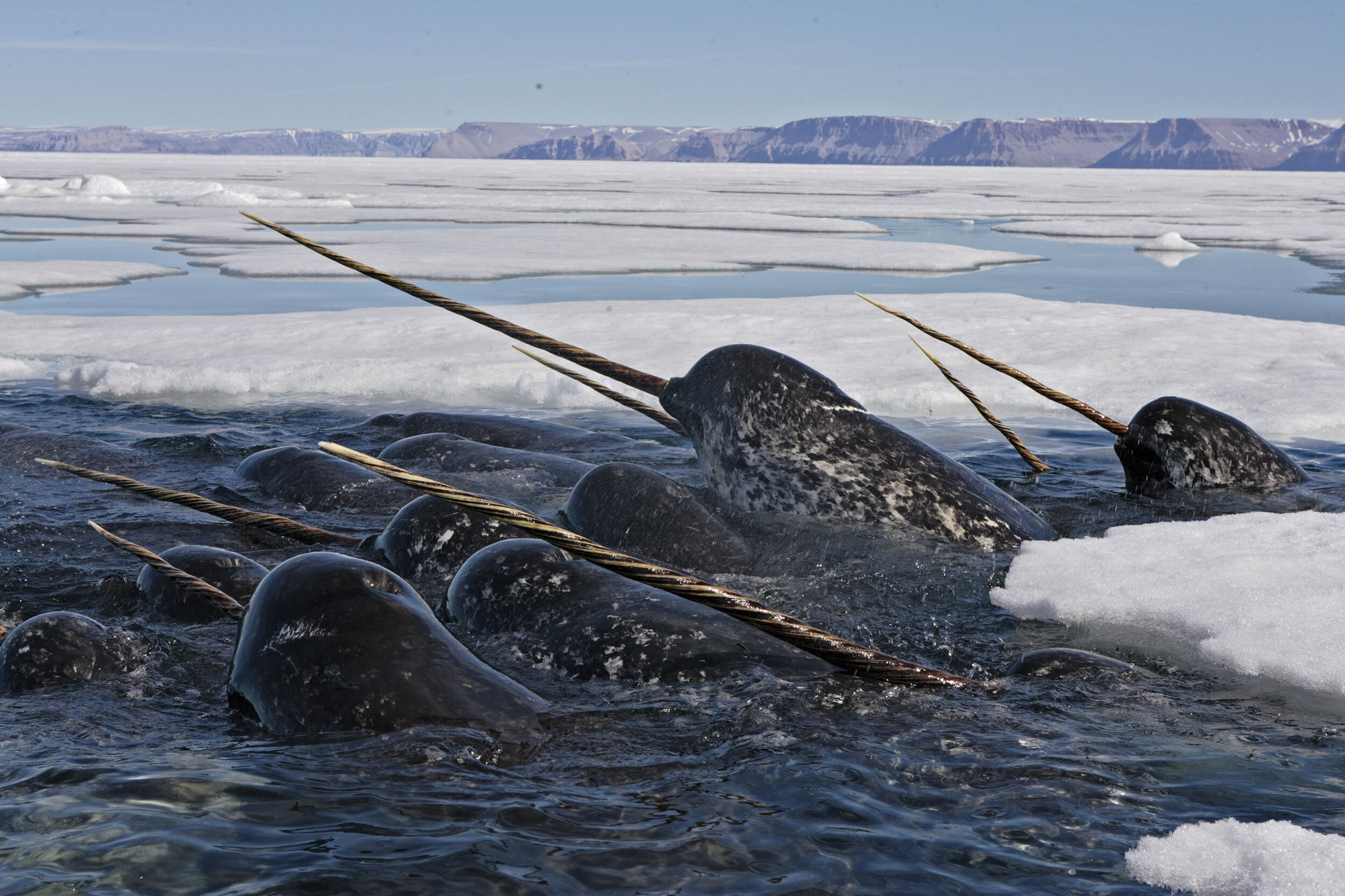
Arctic
Photo © Paul Nicklen/National Geographic Stock/WWF-Canada
Every summer, the nutrient-rich waters of Canada’s Lancaster Sound host more than 80,000 narwhals, three quarters of the world’s population.
Fisheries and Oceans Canada, with support from WWF-Canada, Vancouver Aquarium, and the Pond Inlet Hunters and Trappers Organization, have researched narwhal behaviour and movements in Eclipse Sound. Footage captured by aerial drones as part of the project is giving biologists new insights into the behaviour of one of the world’s most mysterious whales. Relatively little is known about narwhals compared to other whales, because they live in the high Arctic in areas that are difficult to access and spend much of their lives under ice-covered waters.
Scientists know even less about the evolution of the narwhal tusk, which is actually a tooth, though it likely serves more than one purpose. Recent research suggests that the tusk has thousands of nerve endings, as well as pores that allow narwhals to sense the environment around them.
Additional research through WWF-Canada’s Arctic Species Conservation Fund will seek to identify important narwhal calf rearing habitats in the region.
For more information visit WWF’s Arctic Programme.

